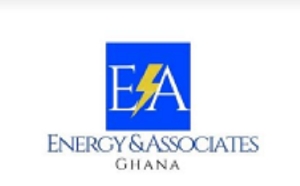Dumsor to worsen by year-end:
Ghana's power sector is at a critical juncture, with gas supply chain challenges coupled with huge debts in the sector and poorly managed Cedi being the cause. These challenges are not episodic but are rooted in a history of oversight, mismanagement, and, notably, the politicization of a sector vital to the nation's socio-economic stability.
The entanglement of procurement interests over strategic problem-solving has funneled the sector into a vortex of heavy indebtedness and operational inefficiencies, exacerbated by the precarious management of the Cedi.
The latest information received indicates that the Volta River Authority’s (VRA) Station 3, particularly the Siemens plant designated for Kumasi station, lacks the necessary operational budget. It has come to light that Unit 3 of the Siemens plant is currently experiencing a fault, rendering the entire generator system incapacitated due to the unavailability of spare parts for replacement.
Consequently, the Siemens plants are deemed unfit for operation, let alone relocation to Kumasi. An illustrative example is the prolonged downtime of the Ameri units, attributed to mismanagement by VRA authorities spanning over two years. Presently, only six out of the ten units have been relocated, incurring a substantial cost of approximately GHS 52 million.
Moreover, the remaining four units initially slated for replacing T3 machines for repowering are also undergoing relocation to Kumasi, incurring additional expenses. Furthermore, the maintenance regime of Tapco, previously overseen by Ansaldo, has been transitioned to a new contractor. So, a lot is happening that is affecting the efficiency of the power sector.
We would share a comprehensive sector report to give an insight into various aspects of power generation, demand, exports, hydrology data, gas flow rates, and liquid fuel stocks.
Previous and Current Peak Load:
The peak load increased from 3437 MW the previous day to 3618 MW today. This shows an increase in electricity demand.
Off-Peak Period:
Generation Capacity: 2915 MW
Forecast Max Load: 3173 MW
The generation capacity during off-peak hours is insufficient to meet the forecast max load, indicating a deficit of 258 MW.
Exports total 228 MW (CIE: 28 MW, Sony: 150 MW, CEB: 50 MW).
Off-peak load management measures involve ECG reducing demand by 140 MW.
Peak Period:
Scheduled Capacity: 3316 MW
Forecast Peak Demand: 3714 MW
The forecast demand exceeds the scheduled generation capacity by 398 MW during peak hours, indicating a significant shortfall. Exports remain the same as in the off-peak period, totaling 227 MW. Peak load management involves ECG reducing demand by 200 MW.
Hydrology Data:
Akosombo water level dropped slightly by 0.07 feet to 270.50 feet.
BUI water level also saw a small decrease of 0.05 m to 168.69 m.
These slight decreases in water levels indicate stable but monitored conditions for hydroelectric power generation.
Gas Flow Rate Data:
Total gas flow rates for different sources are provided, with significant contributions from ENI (234.69 mmscf) and Gh-Gas (GPP) at 93.51 mmscf.
Tema has the highest gas consumption at 178.43 mmscf, followed by Takoradi at 77.48 mmscf.
The gas flow rates are crucial for understanding the available capacity for gas-fired power generation.
Liquid Data:
LCO Stocks:
Takoradi has a significant amount of LCO stock, sufficient for 13 days.
Tema's LCO stocks are much lower, only enough for approximately 2.6 days.
DFO Stocks:
DFO stocks are notably low, with TT32 having 6788.53 barrels and no stocks at KTPS, indicating potential supply issues for diesel-fired generation.
HFO Stocks:
AK79 has 295 m3 of HFO stocks, which is relevant for heavy-fuel oil-fired generation stations.
Summary:
The power generation capacity is currently under strain both during off-peak and peak periods, with demand outstripping supply. Hydrology data indicates stable conditions for hydroelectric power generation, though careful monitoring is necessary. Gas flow rates suggest a reliance on gas-fired power generation, with significant consumption at major locations. Liquid fuel stocks, especially for LCO and DFO, indicate a need for careful management, particularly given the low DFO stocks, which could impact diesel-fired power generation.
Overall, there is a clear need for careful management of resources and possibly increasing generation capacity or reducing exports (which will be difficult due to contractual constraints) during peak demand times to ensure supply meets demand.
Steps to address these challenges:
Technical and Economic Decision-making: Decisions within the power sector must pivot from political to technical and economic grounds, ensuring solutions are pragmatic and directly address the root causes of the energy crisis.
Robust Fiscal and Currency Management: Implementing rigorous policies to stabilize the CEDIA and enhance the financial robustness of the power sector is paramount. This includes strategies for currency risk mitigation and a re-evaluation of the financial mechanisms in place.
Infrastructure and Efficiency Enhancements: The gas supply chain is riddled with bottlenecks, from production through transmission to distribution. Investing in infrastructure modernization and adopting advanced technologies for gas storage and transportation will be critical to alleviating these constraints.
Renewable Energy Diversification: Mitigating the reliance on imported fuels through the acceleration of renewable energy sources is essential. This not only addresses the currency risk but also aligns with global sustainability goals.
The imminent power crisis by year's end necessitates immediate action from all stakeholders.
By addressing the gas supply challenges with technical acuity and adopting a comprehensive approach to sector reform, Ghana can pave the way for a more stable, sustainable, and prosperous energy future. This collaborative effort must be grounded in transparency, strategic foresight, and a commitment to the national interest above all.
Opinions of Friday, 22 March 2024
Columnist: Ibrahim Baidoo















